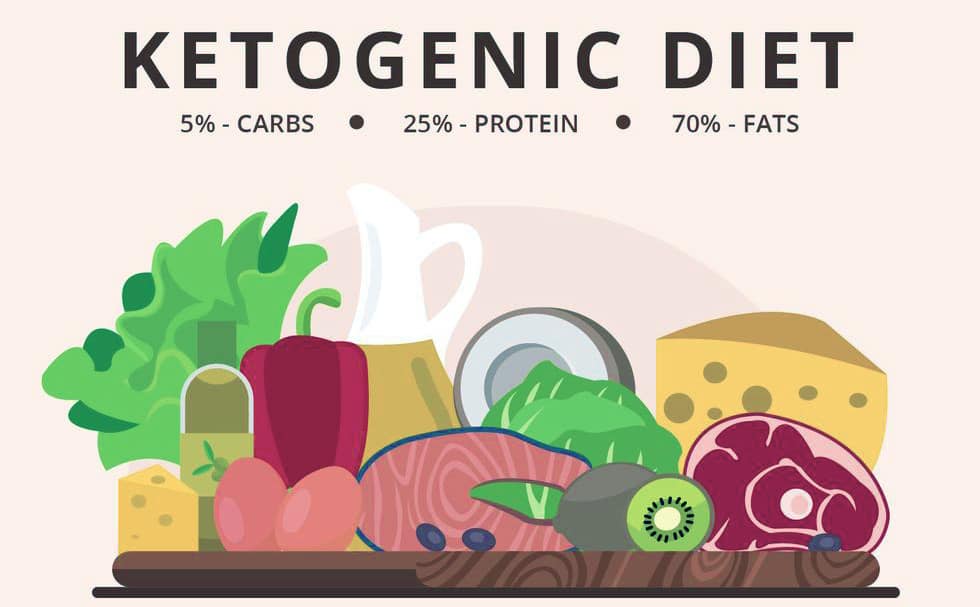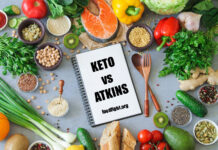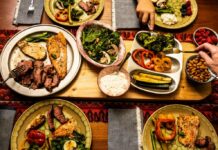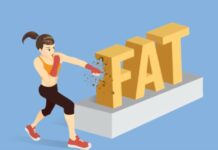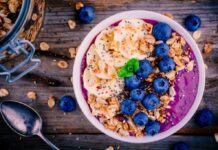The Keto Diet has been flying high as the most popular diet trend around. People who want to lose weight are rushing to try the diet.
The ketogenic diet craze might have kicked up in recent years, but it’s actually been around for a while. Known as keto, Dr. Russell Morse Wilder at the Mayo Clinic first designed this diet plan in 1923.
This program focuses on a macronutrient ratio high in fat, adequate in protein and low in carbs.
Abbreviated from “Ketogenic Diet”, the diet isn’t just another fad. There are more than 23 studies which back up the claims.
You could significantly reduce your risk of developing dozens of diseases, such as diabetes and cancer, by following the keto diet principles.
But, what is the keto diet? With all this talk, it’s not always easy to get started. Let’s check out this guide on the keto diet for beginners below.
What Is the Keto Diet?
Essentially, the keto diet is the principle of keeping a low-carb and high-fat diet.
When you don’t easy as many carbs, your body goes into a metabolic state, which is known as “ketosis.” That’s where the name “keto” comes from.
Why does this matter?
When you’re in this state, your body burns fat more efficiently than normal. This subsequently helps you to reduce your blood sugar and effectively lose weight.
Types of Keto Diet
The keto diet isn’t one thing. There are actually up to four different types of the keto diet. You need to pick which one is right for you.
1. The Standard Keto Diet
This is the standard keto low-carb and high-fat diet. You should eat around 75% fat and only 5% carbs. But, this also includes a moderate amount of protein, which is around 20 percent of your diet.
2. Cyclical Keto Diet
Instead of keeping the same diet throughout the week, the cyclical keto diet does five days on and two days off. Therefore, you can go all out on potatoes and pasta at the weekend.
3. The Targeted Keto Diet
Up to three-quarters of Americans don’t get enough exercise. It’s worthwhile remembering that if you want to lose weight, you need to get moving as well.
The targeted keto diet permits you to eat carbs following a workout. This is because you’ll burn the carbs quickly anyway when you’re exercising.
4. High-Protein Keto Diet
Unlike the “standard” keto diet, this plan includes high protein. But, you should continue to eat only around 5% carbs. Just around one-third of your diet should be protein now.
This is similar to a standard ketogenic diet but includes more protein. The ratio is often 60% fat, 35% protein, and 5% carbs. This is especially recommended by athletes who want to build muscle.
Does the Keto Diet Actually Work?
The keto diet has been proven to be extremely effective at weight loss. It also has been connected with several other health benefits.
Compared with low-fat diets, the keto diet has often delivered more effective results.
Say bye to calorie counting and consumption tracking. You won’t be hungry all the time either. So, it’s much easier to stick to it too.
How Does Keto Diet Work?
The key to keto diet weight loss is getting your body into the state of ketosis and keeping it there.
What is Ketosis?
Ketosis is a natural process that happens when the body is deprived of carbohydrates for a few days. The body then begins to produce higher levels of ketones.
Ketones, or ketone bodies, are the byproducts of the body breaking down fat as a fuel source. Under normal conditions, the body mostly runs on glucose as a fuel source.
The body breaks the foods we eat down and converts the carbohydrates to glucose, which then fuels the cells like gasoline fuels a car engine.
When these carbohydrate sources dry up, the body has to break down fat for fuel. This is ketosis – the state we want to induce and stay in for ongoing weight loss.
The Perks of Ketosis
There are two awesome side-effects to ketosis – lower hunger levels and higher energy levels.
These two factors are very helpful in kick-starting and maintaining weight loss. But be patient – these may take a few days to kick in.
Some people may experience some temporary side effects, such as weakness, slight irritability or tiredness. These will be over quickly once your body adapts to being in ketosis.
Lower hunger + more energy = naturally lower calorie consumption!
The perfect formula for weight loss.
What Helps Keep You in Ketosis?
First-week weight loss is often dramatic on the keto diet. It is not uncommon for people to lose between 2 and 10 pounds in the first week!
However, this is mostly water weight that the body was holding onto as it processed the carbs in your system.
For continued keto diet weight loss, or more specifically, fat loss, you need to maintain a calorie deficit.
This does not mean starving yourself, but at the same time, if you eat more calories than you are burning on a ketogenic diet, your weight loss will stall, and you could gain weight.
Most importantly, make sure you’re getting your macros right.
What are Macros?
Macros are the major nutrients in your diet – carbohydrates, proteins, and fats.
For a keto diet, macros depend on a number of factors, such as your gender, age and weight. Calculators abound online to guide you.
Generally speaking, you need to follow a ratio of about 70% calories from fat, 20% from protein and 10% from carbs.
Keeping an honest food diary, as well as meal planning, can help you to keep your macros at the correct level.
Understanding the Benefits of the Keto Diet
The ketogenic diet is often associated purely with weight loss.
Many people do lose weight when they’re on a ketogenic diet because a high-fat, low-carb diet leaves them feeling more satiated and less likely to overeat. But, a ketogenic diet results in lots of other non-weight related health benefits, too.
Keep reading to discover the top 10 benefits you can experience with a keto meal plan.
1. Love the Weight Loss
It takes our bodies a lot more work to turn fat into energy than carbs. All that work can keep our bodies in a state of ketosis, which speeds up weight loss.
Since the ketogenic diet is also high in protein, you won’t spend the entire time hungry.
After all, hunger is one of the worst parts of any diet. However, keto’s low-carb eating helps reduce the body’s appetite. With more protein and fat in your diet, you won’t struggle with hunger throughout the day.
That makes it easier to reduce how many calories you eat in a single day!
2. Cut Back Cancer
Cancer patients can experience the benefits of the ketogenic diet, too. In fact, keto can help prevent or even treat some cancers.
This makes a keto meal plan a complement to chemotherapy and radiation treatments. Keto causes more oxidative stress in cancer cells than normal cells. This can help support those cancer treatments.
Blood sugar and insulin levels are associated with some cancers, too.
Since a ketogenic diet reduces these levels, starting a keto diet now might help prevent cancer in the future.
3. Stronger Heartbeats
Replace those pork rinds with avocados and other healthy fats instead!
Healthy choices can help reduce your body’s cholesterol. These include foods that are rich in fiber, fatty fish, and soy-based foods.
The low-carb ketogenic diet also increases the “good” cholesterol in our bodies, which lowers our risk of heart disease.
Adding these foods to your diet can help remove the visceral fat around your organs. Over time, this can help reduce the risk of heart disease as well as type 2 diabetes.
4. Boosts the Brain
The keto diet can also offer neuroprotective benefits. That means it could potentially treat or prevent conditions such as:
- Alzheimer’s disease
- Sleep disorders
- Parkinson’s disease
A keto meal plan might also help you feel more alert while improving cognitive function.
However, studies are still underway to determine the full extent of keto’s effect on brain health.
5. Reduce Seizures
The state of ketosis occurs when there’s an elevated level of ketone bodies in our bloodstream. To achieve ketosis, you need the right combination of carbs, protein, and fat. This impacts how our bodies use energy.
Achieving ketosis can help reduce the number of seizures for people with epilepsy.
While there have been a few studies using keto to treat children with epilepsy, research is still underway.
6. Adieu, Acne
Acne is caused by environmental factors (pollution, exposure to oil, heat, humidity) as well as internal factors. That includes our diet and blood sugar levels.
A diet with a lot of refined and processed carbohydrates can alter our blood bacteria.
It can also cause blood sugar fluctuations. Both impact our skin health.
By decreasing carb and sugar intake, ketogenic diet foods also reduce acne levels. Instead of reaching for a chocolate bar, you can try a fat bomb as a snack.
These healthy sugar substitutes can also help you fight that sweet tooth craving.
7. Put a Pause on PCOS
This study recognized the benefits of the ketogenic diet on patients with PCOS.
Also known as a polycystic ovarian syndrome, PCOS is an endocrine disorder. Symptoms include:
- Weight gain
- Fatigue
- Mood swings
- Sleep problems
- Headaches
- Unwanted hair growth
- Infertility
- Acne
A high-carb diet can make these symptoms worse. However, a keto diet can increase weight loss and put your hormones back in balance.
If you have PCOS, try a few keto recipes. There are 17 easy keto lunch ideas to get you started.
8. Triglycerides Drop
These fat molecules circulate within our bloodstream. High fasting triglycerides, however, put us at risk for heart disease.
Carbs can give these triglycerides a boost, especially if you’re consuming fructose sugar.
With a ketogenic diet, you can cut the carbs and reduce your blood triglycerides level.
9. Lower Blood Pressure
Hypertension, or elevated blood pressure, can put people at risk for heart disease, kidney failure, and stroke.
A low-carb diet can help lower your blood pressure. With lower blood pressure, you’re extending your lifespan and reducing your risk of these diseases.
10. Reverse Diabetes
According to the study, the ketogenic diet can also treat type 2 diabetes.
Millions of people worldwide experience diabetes and insulin resistance. A ketogenic diet, however, can help lower blood sugar and insulin levels.
This can help patients with diabetes reduce their insulin dosage or glucose-lowering medication.
Metabolic syndrome can put you at risk of diabetes and heart disease, too. The symptoms include:
- Abdominal obesity
- Elevating fasting blood sugar levels
- High triglycerides
- Elevated blood pressure
- Low “good” cholesterol levels
We’ve already discussed the benefits of the ketogenic diet on these bodily functions. That means keto is effective in reducing the symptoms of metabolic syndrome, too!
If you have diabetes and take blood sugar medication, speak with your doctor before changing your carb intake. You might need to adjust your dosage beforehand to prevent hypoglycemia.
Which Food to Reduce and Avoid?
You need to reduce or avoid your consumption of high-carb foods. These include the following:
- Wheat products, e.g. rice or pasta
- Beans, e.g. lentils or peas
- Root vegetables, e.g. potatoes or carrots
- Alcohol, e.g. beer or wine
- High sugar foods, e.g. cake or ice-cream
Which Foods to Eat More of?
If you’re reducing or eliminating your consumption of high-carb foods, you need to replace the calories with high-fat foods.
These include the following:
- Red meat, e.g. sausages and steak
- Fish, e.g. salmon and tuna
- Eggs
- Dairy, e.g. cheese or butter
- Vegetables, e.g. greens and tomatoes
- Nuts, e.g. basil nuts or pecans
What Does a Keto Diet Meal Plan Look Like?
The change to your diet can be difficult to imagine. That’s why you may find it helpful to have an example meal plan.
Example Meal Plan One
- Breakfast: Sausage Breakfast Casserole
- Lunch: Spanish Meatloaf
- Dinner: Chinese Chicken and Cauliflower Rice
Example Meal Plan Two
- Breakfast: Keto Scramble with Andouille
- Lunch: Red Curry Beef
- Dinner: Cod with Pomodoro Sauce and Asparagus
If you need snacks as well to supplement your diet, you can stick to healthy foods. Examples include:
- Handful of nuts
- Dark chocolate
- Olives with chunks of cheese
How to Eat Out With the Keto Diet?
You may find eating out with the keto diet quite a challenge. You won’t be able to get your hands on a keto-friendly meal at every restaurant.
But you can always make requests. Ask the chef to replace any carbs (e.g. pasta or potatoes) with green vegetables.
You can also replace the bread in a hamburger with an extra egg or more vegetables again. Remember, stay off alcohol as much as possible.
What Side Effects to Expect?
The keto diet is a healthy diet. But, that doesn’t mean there aren’t side effects when you first switch to the diet. It can come as quite a significant change.
You may hear this referred to as “keto flu.” Symptoms include low energy, disrupted sleep, and general discomfort. It should last a few days while your body gets used to the low-carb and high-fat diet.
Keep faith with the keto diet. Once your body gets used to it, you’ll start to receive the benefits of weight loss and improved health.
Start the Keto Diet Yourself
Now you’ll know the answer next time someone asks you, “What is the Keto Diet?”
If you want to lose weight, the keto diet has been shown to effectively help people to shed those pounds.

